Div Soup Demonstration
Posted on July 11th, 2009
Lorem ipsum text blah blah blah.
Lorem ipsum text blah blah blah.
Lorem ipsum text blah blah blah.
Web designers can accomplish some cool stuff using HTML4 and CSS2.1. We can complete the logical structure of documents and create content-rich websites without using the old table-based layout. We can add beautiful and subtle styling to our website without using inline and
tags. In fact, our current design capabilities have taken us far away from that terrible era of browser wars, proprietary protocols, and those ugly web pages full of flickers, scrolls, and flashes.
Although we now commonly use HTML4 and CSS2.1, we can do better! We can restructure our code and make our page code more semantic. We can reduce the amount of styling code that gives pages a beautiful look and make them more scalable. Now, HTML5 and CSS3 are eagerly waiting for everyone. Let’s see if they can really bring our design to the next level...
In the past, designers often used table-based layouts without any semantics. But in the end, thanks to innovators like Jeffrey Zeldman and Eric Meyer, smart designers slowly accepted the relatively more semantic
Posted on July 11th, 2009
Lorem ipsum text blah blah blah.
Lorem ipsum text blah blah blah.
Lorem ipsum text blah blah blah.
Lorem ipsum text blah blah blah.
Lorem ipsum text blah blah blah.
Lorem ipsum text blah blah blah.
Although this is a bit reluctant, the above example can still illustrate that using HTML4 to code a complex design is still too bloated (in fact, xHTML1.1 is nothing more than that). But what's exciting is that HTML5 solves the "
The following is an example of an HTML5 solution:
Posted on July 11th, 2009
Lorem ipsum text blah blah blah.
Lorem ipsum text blah blah blah.
Lorem ipsum text blah blah blah.
正如我们所见,HTML5可以让我们用很多更语义化的结构化代码标签代替那些大量的无意义的
跟class属性说再见,欢迎整洁的标签
结合了富有新的语义化标记的HTML5,CSS3为web设计师们的网页提供了神一般的力量。有了HTML5的能量,我们将得到更多的对文档代码的控制权,有了CSS3的能量,我们的控制权将趋于无穷大!
即使没有那些高级的CSS选择器,我们仍然可以通过强大的HTML5条调用不同的容器而不劳驾class和id这类属性。像以往的DIV布局,我们在css中可能要这样调用: div#news {}
我们再来看看基于HTML5的实例: section {}
Do not use class and id to locate HTML-5 elements
Now let’s take a look at how to locate an instance of an HTML5 page element without using class and id. We can use three CSS selectors to locate and identify elements in the instance. As follows:
Descendant selector: [CSS 2.1]: EF
Sibling selector: [CSS 2.1]: E F
Child selector: [CSS 2.1]: E > F
Let’s take a look at how to position the section elements in the document without using class and id:
Locate the outermost
Considering that our example is not a complete set of HTML5 code, we assume that there is a
Locate the next
As the only immediate subset element under the outermost
Position the
There are many ways to locate the
Positioning the
These three elements appear in two places respectively, one is in the
Or define together:
So far, we have used CSS2.1 selectors to exclude all classes and ids. So why do we still need to use CSS3? I'm glad you asked...
Advanced positioning of HTML5 elements using CSS3
Although we have used CSS2.1 selectors to exclude all classes and ids, there are obviously many more complex situations that require CSS3 advanced selectors to solve. Let's learn how to use CSS3 to position page elements without using useless class and id attributes by completing the following example.
Locate all posts using a unique post (post) ID
Wordpress provides us with a source code output for each post that includes the ID. This information is typically used for navigation and/or understanding the intent of the material, but CSS3 can utilize these unique IDs to style these posts. Of course, you could add the class="post" attribute to each post as usual, but that would defeat the purpose of our exercise (plus it wouldn't be any fun). Using the "Substring Match Selector", we can locate all logs and their different elements as shown below.
We can still position comment elements and their children in the same way.
Locate some specified sections or articles
There are many blogs with a large volume of logs and comments. HTML 5 will consist of
Similarly, we can use the ":nth-last-child" selector to locate some elements in reverse order.
section:nth-last-child(2) {} /* Select the second to last
article:nth-last-child(2) {} /* Select the second to last
Use more ways to select specific elements
Another way to select specific elements in HTML5 (such as header, section and footer) is to take advantage of the ":only-of-type" selector. Since these HTML5 elements often appear more than once in many places, this method is convenient when we want to locate a tag that only appears once under the parent element. For example, what we want to select is the only element in a certain element, such as the following code:
We can just use the following one line selector:
Again, you can stubbornly add an ID attribute to each element, but you will lose the scalability, maintainability and absolute simplicity of the code by decoupling structure from presentation. CSS3 does allow us to quickly and easily locate almost all page elements that do not have ID and class attributes.
Summary
I believe that as time goes by and more browsers support it, HTML5 and CSS3 will become more and more popular. They will bring more unlimited energy to web designers and make our web front-end even better. steps. (Text/Onimusha)
 html5的div一行可以放两个吗Apr 25, 2022 pm 05:32 PM
html5的div一行可以放两个吗Apr 25, 2022 pm 05:32 PMhtml5的div元素默认一行不可以放两个。div是一个块级元素,一个元素会独占一行,两个div默认无法在同一行显示;但可以通过给div元素添加“display:inline;”样式,将其转为行内元素,就可以实现多个div在同一行显示了。
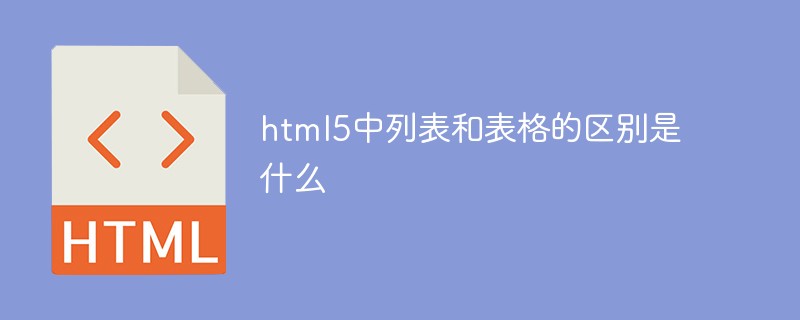 html5中列表和表格的区别是什么Apr 28, 2022 pm 01:58 PM
html5中列表和表格的区别是什么Apr 28, 2022 pm 01:58 PMhtml5中列表和表格的区别:1、表格主要是用于显示数据的,而列表主要是用于给数据进行布局;2、表格是使用table标签配合tr、td、th等标签进行定义的,列表是利用li标签配合ol、ul等标签进行定义的。
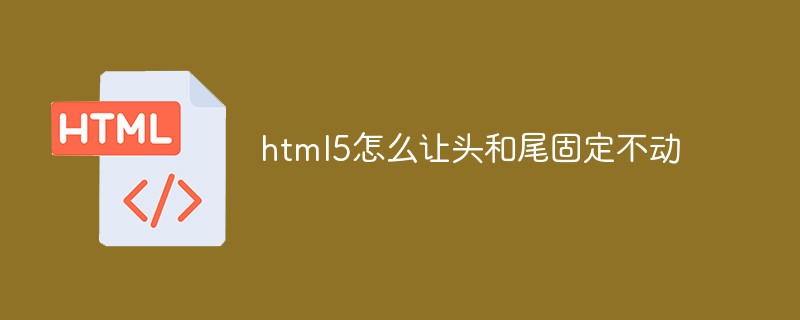 html5怎么让头和尾固定不动Apr 25, 2022 pm 02:30 PM
html5怎么让头和尾固定不动Apr 25, 2022 pm 02:30 PM固定方法:1、使用header标签定义文档头部内容,并添加“position:fixed;top:0;”样式让其固定不动;2、使用footer标签定义尾部内容,并添加“position: fixed;bottom: 0;”样式让其固定不动。
 HTML5中画布标签是什么May 18, 2022 pm 04:55 PM
HTML5中画布标签是什么May 18, 2022 pm 04:55 PMHTML5中画布标签是“<canvas>”。canvas标签用于图形的绘制,它只是一个矩形的图形容器,绘制图形必须通过脚本(通常是JavaScript)来完成;开发者可利用多种js方法来在canvas中绘制路径、盒、圆、字符以及添加图像等。
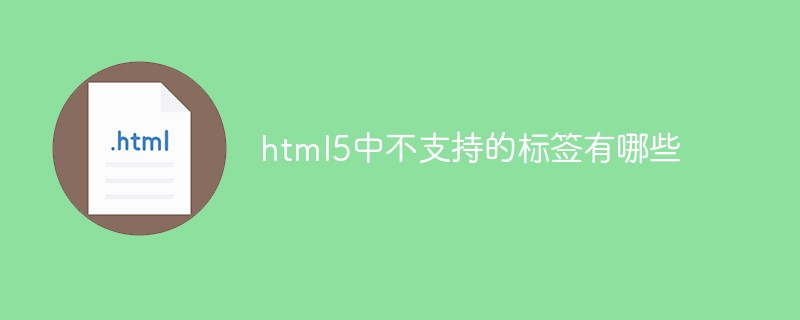 html5中不支持的标签有哪些Mar 17, 2022 pm 05:43 PM
html5中不支持的标签有哪些Mar 17, 2022 pm 05:43 PMhtml5中不支持的标签有:1、acronym,用于定义首字母缩写,可用abbr替代;2、basefont,可利用css样式替代;3、applet,可用object替代;4、dir,定义目录列表,可用ul替代;5、big,定义大号文本等等。
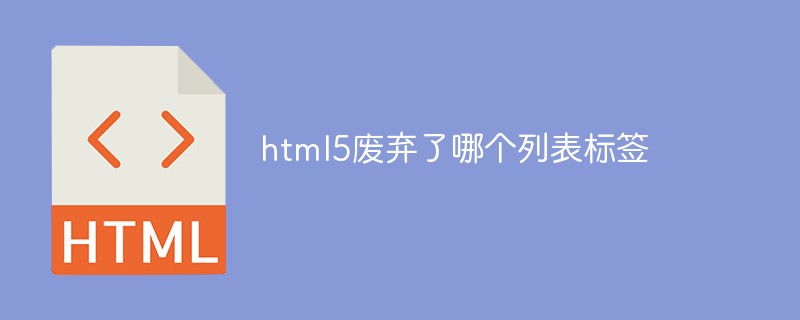 html5废弃了哪个列表标签Jun 01, 2022 pm 06:32 PM
html5废弃了哪个列表标签Jun 01, 2022 pm 06:32 PMhtml5废弃了dir列表标签。dir标签被用来定义目录列表,一般和li标签配合使用,在dir标签对中通过li标签来设置列表项,语法“<dir><li>列表项值</li>...</dir>”。HTML5已经不支持dir,可使用ul标签取代。
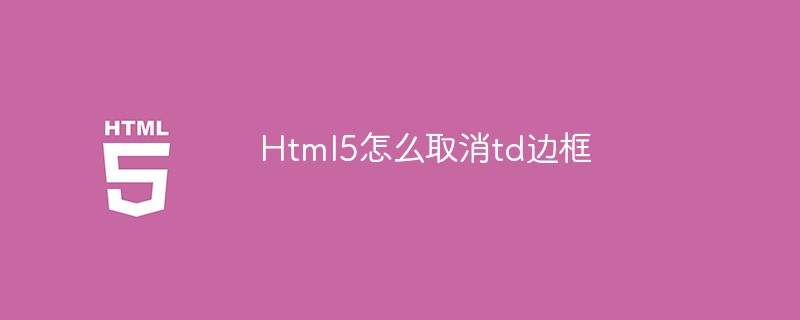 Html5怎么取消td边框May 18, 2022 pm 06:57 PM
Html5怎么取消td边框May 18, 2022 pm 06:57 PM3种取消方法:1、给td元素添加“border:none”无边框样式即可,语法“td{border:none}”。2、给td元素添加“border:0”样式,语法“td{border:0;}”,将td边框的宽度设置为0即可。3、给td元素添加“border:transparent”样式,语法“td{border:transparent;}”,将td边框的颜色设置为透明即可。
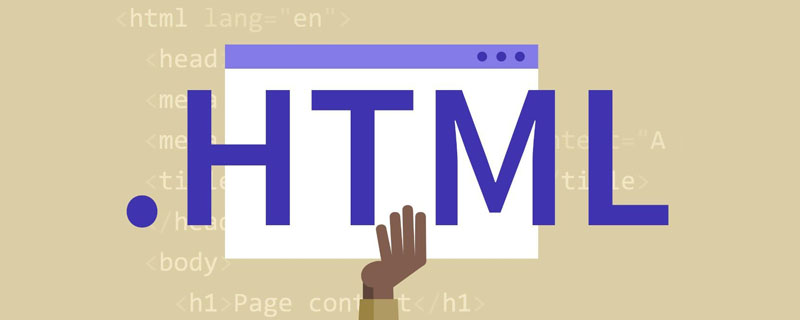 html5是什么意思Apr 26, 2021 pm 03:02 PM
html5是什么意思Apr 26, 2021 pm 03:02 PMhtml5是指超文本标记语言(HTML)的第五次重大修改,即第5代HTML。HTML5是Web中核心语言HTML的规范,用户使用任何手段进行网页浏览时看到的内容原本都是HTML格式的,在浏览器中通过一些技术处理将其转换成为了可识别的信息。HTML5由不同的技术构成,其在互联网中得到了非常广泛的应用,提供更多增强网络应用的标准机。



AI-powered app for creating realistic nude photos

Online AI tool for removing clothes from photos.

Undress images for free

AI clothes remover

Generate AI Hentai for free.



The most popular open source editor

mPDF is a PHP library that can generate PDF files from UTF-8 encoded HTML. The original author, Ian Back, wrote mPDF to output PDF files "on the fly" from his website and handle different languages. It is slower than original scripts like HTML2FPDF and produces larger files when using Unicode fonts, but supports CSS styles etc. and has a lot of enhancements. Supports almost all languages, including RTL (Arabic and Hebrew) and CJK (Chinese, Japanese and Korean). Supports nested block-level elements (such as P, DIV),

SublimeText3 Linux latest version

A free and powerful IDE editor launched by Microsoft

Powerful PHP integrated development environment
